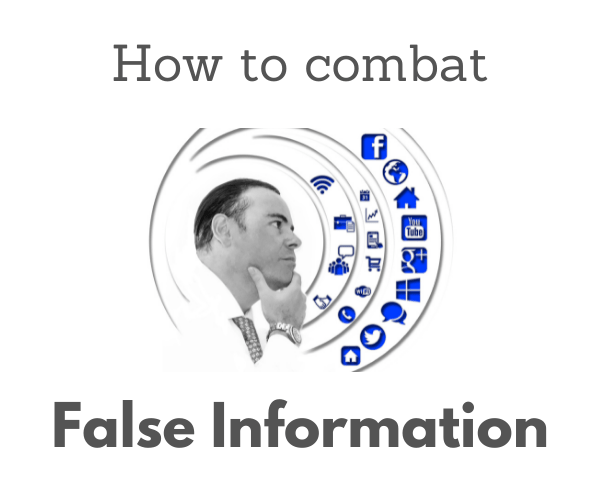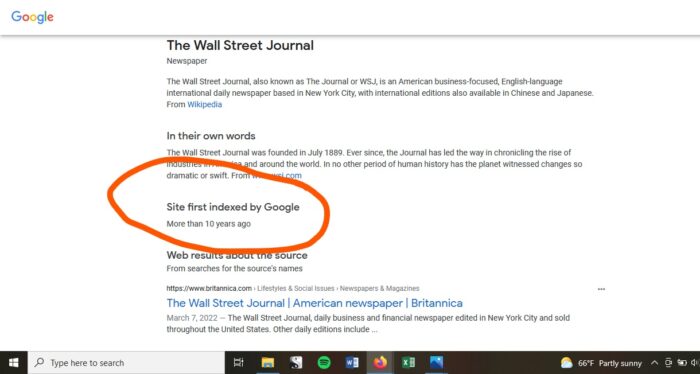I’ve talked about misinformation and disinformation before, but the war in Ukraine has revived my concern about how individuals, organizations, and governments can use false information to sway public opinion. I was saddened, but not surprised, to read an article in The New York Times which reported that many Ukrainian people cannot convince their relatives in Russia that a war is going on. The Russians, based on the information the Kremlin is feeding them, simply don’t believe Russia is attacking Ukraine and killing civilians. Disinformation clouds their vision of the truth.
Social media platforms acknowledge the issue of disinformation and are adding fact checkers and attaching warning labels to suspicious content. However, so much gets posted each day, it’s hard to filter through it all. And, social media platforms reward posts that attract attention and go viral quickly, so any attempts to stifle disinformation go against the natural drive of the social media business model.
Clearly, we cannot depend solely on social media sites to manage the problem of misinformation. We must prepare ourselves to spot bad information and combat it. But how?
Several interesting articles and podcasts have been published lately with great tips for recognizing and investigating disinformation. The short lesson: approach all posts with skepticism. But here are a few specific things you can do to limit the spread of bad information.
Slow down
Don’t share a post right away. Take a few minutes to fact check and see if it’s valid. Do not re-share the post until you are sure it is solid information from a reliable source. There are lots of ways to approach this.
Watch for emotional triggers
If a post makes a strong appeal to an emotional reaction, be suspicious. Ask yourself why the creator of the post wants to elicit an emotion from you (good or bad) instead of inform you.
Check the source
Look at who shared the post. If it’s a friend or relative who is not directly involved with the issue or does not have expertise in the issue, do not consider the information valid.
Track down the original source of the post and find out if the source has legitimate experience, education, or expertise in the topic. Remember that being well known does not make a person trustworthy. Some specific things to research:
- Look up the website of the source to make sure it’s legit. (A URL like CNNfactz.org is a red flag.)
- Enter the website address in a Google search. On the right side of the screen, Google will tell you who publishes the site, when it was founded, where it is located. Next, click on the three dots next to a website’s address to get more information about the source, like when the site was first indexed by Google search engines. For example, when I look at background information about The Wall Street Journal, I find that it was first indexed or recognized by Google search engines 10 years ago. Be cautious about organizations or accounts that have been recently established and/or have few followers.
Don’t believe it just because you see it
Do not believe every photo you see and remember that images can be doctored and edited. Or pulled from an event that happened ten years ago. Get background information on an image by using Google Image Search. Instead of entering a search term, click on the camera icon and either drag an image or paste the link for the photo into the search bar. Google will share facts about the photo, stories in which it has appeared, and similar photos. Also look for obvious signs of photo editing like missing shadows.
Again, don’t re-share until you are sure
While you do this background research, by all means, do NOT re-share the post. This will just promote more viral spread and get more questionable information to more people. Instead, take a screen shot of the post and ask a trusted authority (or a couple of them) for their opinion on the post.
Put things in context
Remember that one post, snippet, or article does not tell the whole story. Read widely, and from a variety of trusted sources, about a topic to gain better insight. Take the advice of St. Francis and Stephen Covey seriously: seek to understand before being understood.
More help…
If you would like to learn more about how to combat disinformation, check out “How to avoid falling for and spreading misinformation about Ukraine” from The Washington Post. You can also consult fact checking sites like The Washington Post Fact Checker, Snopes, or Politifact. Or this article from MIC.com about evaluating images. You can also listen to this episode of Make Me Smart from Marketplace:
How do you combat mis- and disinformation? Do you have other fact checking practices and sites to recommend?
Thanks for getting nerdy with me!






Good advice. The problem is, I have no idea where to go to find reliable information anymore. No one seems to be making any effort at all at communicating objective truth, I have come to distrust all the media sources. Even the ones I used to read regularly have become little more than the emotional inflammatory writing you rightly warned against.
I posted an article on FB the other day in which I urged others to learn to distinguish between what is true and what is the truth. So many writers have learned the art of assembling fact – true things – in such a way as to lead the reader to something other than the truth. The most convincing lies are the ones based on facts. But the facts one selects to publish have as much effect on what the reader perceives to be the truth as does the relative accuracy of the “facts” presented.
I hate having such a cynical perspective, but I have been burned too many times by news sources on the right and the left, so I no longer bother reading them. This may leave me ignorant of much, but I prefer being ignorant to being misinformed.
This does not mean I do not occasionally try to find out what is happening, I have just turned most of my attention to more profitable things.
I understand your cynicism, but I am determined to keep trying. And I’m sure time focused on other more profitable things is time well spent. 🙂
Thanks for your response … I shouldn’t write when I am too tired. LOL! I appreciate your positive attitude.
Great advice, Julia.
Funny thing: just yesterday I “attended” a seminar for seniors on how to avoid being scammed or defrauded. The points reviewed were very similar to what you’ve listed: slow down, check the source, step back, etc.
I guess that’s how we need to approach most everything in life, but life has become so “speeded-up” and instantaneous, that we are ripe to be taken in by false “truths” of every kind. *sigh*
Very good point, Debbie. Slow down is good advice across the board! We will keep trying!
Well said, but unfortunately it seems many people who follow disinformation don’t want to fact check.
Fair point, but we’ve got to keep trying, Kevin both to educate ourselves and to create space for productive conversation. Thanks for reading! 🙂